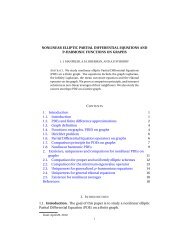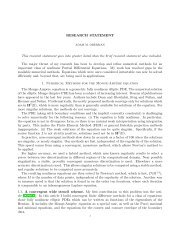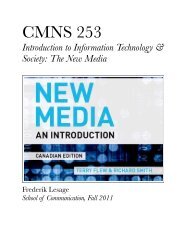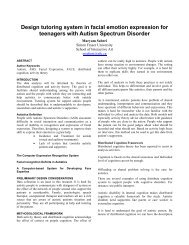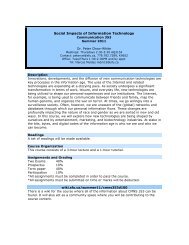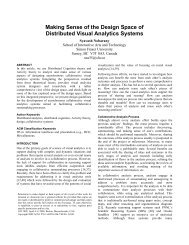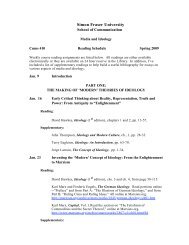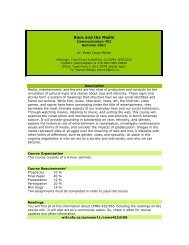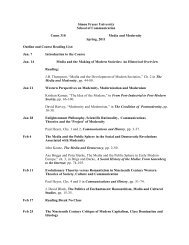Monge.. - SFU Wiki
Monge.. - SFU Wiki
Monge.. - SFU Wiki
You also want an ePaper? Increase the reach of your titles
YUMPU automatically turns print PDFs into web optimized ePapers that Google loves.
4 JEAN-DAVID BENAMOU, BRITTANY D. FROESE, AND ADAM M. OBERMANBöhmer [3] performs consistency and stability analysis of finite element methodsfor fully nonlinear equations.1.3. Contribution of this work, discussion of contents. Motivated by theinterest in the problem, we propose in §2 two different numerical methods for solving(MA). These methods have the advantages of simplicity and performance.The methods are simple in the sense that the algorithms are fully explained inabout a page, and can be implemented in MATLAB using only basic explicit matrixoperations (M1,M2) and a linear solve (M2).First, we set out to build the simplest possible finite difference method for (MA).Our original goal was to find an example where the monotone method of [21] converged,and the finite difference method (M1) diverged. In fact, we found that themethod (M1) converged for all the examples we tried. In addition, this method issecond order accurate (whch is better than the wide stencil method) and is simplyimplemented on a nine point stencil. However, the method is not monotone, so noconvergence proof is available for the method. Based on the success of this method,we take the point of view that the convergent method [21] can be used to validatethe more efficient non-provably convergent method (M1).Second, while we did not undertake to directly implement the methods by Deanand Glowinksi, or Feng and Neilan, we devised a method which can be interpretedas a model for their schemes in the sense that it requires solutions to be in H 2 (Ω).The resulting method is (M2).This performance of (M2) relative to (M1) is superior when the solutions aresmooth but substantially inferior when the solutions are singular. In fact, we havefound strongly singular solutions for which (M2) appears to diverge.The overall and relative performance of the methods is summarised and discussedin §3. We study in detail the performance of the two methods on solutions rangingfrom smooth §4 to moderate §5 to very singular §6.The only case where the monotone method was superior to (M1) was for themost singular example computed, §6.1. In this case, the first method, (M1), was lessaccurate than the monotone method. A minor modification (implemented in §7.1)improves the accuracy of the method by an order of magnitude while maintaininga narrow stencil. Other extensions are discussed in §7.sec:Methods2. The methodsIn this section we present the two methods for solving the two-dimensional<strong>Monge</strong>-Ampère equation. The first is an explicit, Gauss-Seidel iteration methodthat is obtained by solving a quadratic equation at each grid point and choosingthe smaller root to ensure selection of the convex solution.The second method is an iterative method which requires the solution of a Poissonequation at each iteration. The source term in the Poisson equation involvesthe source function for (MA), f, and the Hessian of the current iterate.2.1. Method 1: An Explicit Finite Difference method. The first methodinvolves simply discretising the second derivatives in (MA) using standard centraldifferences on a uniform Cartesian grid. The result isMAdiscrete (2.1) (Dxxu 2 ij )(Dyyu 2 ij ) − (Dxyu 2 ij ) 2 = f i,j



